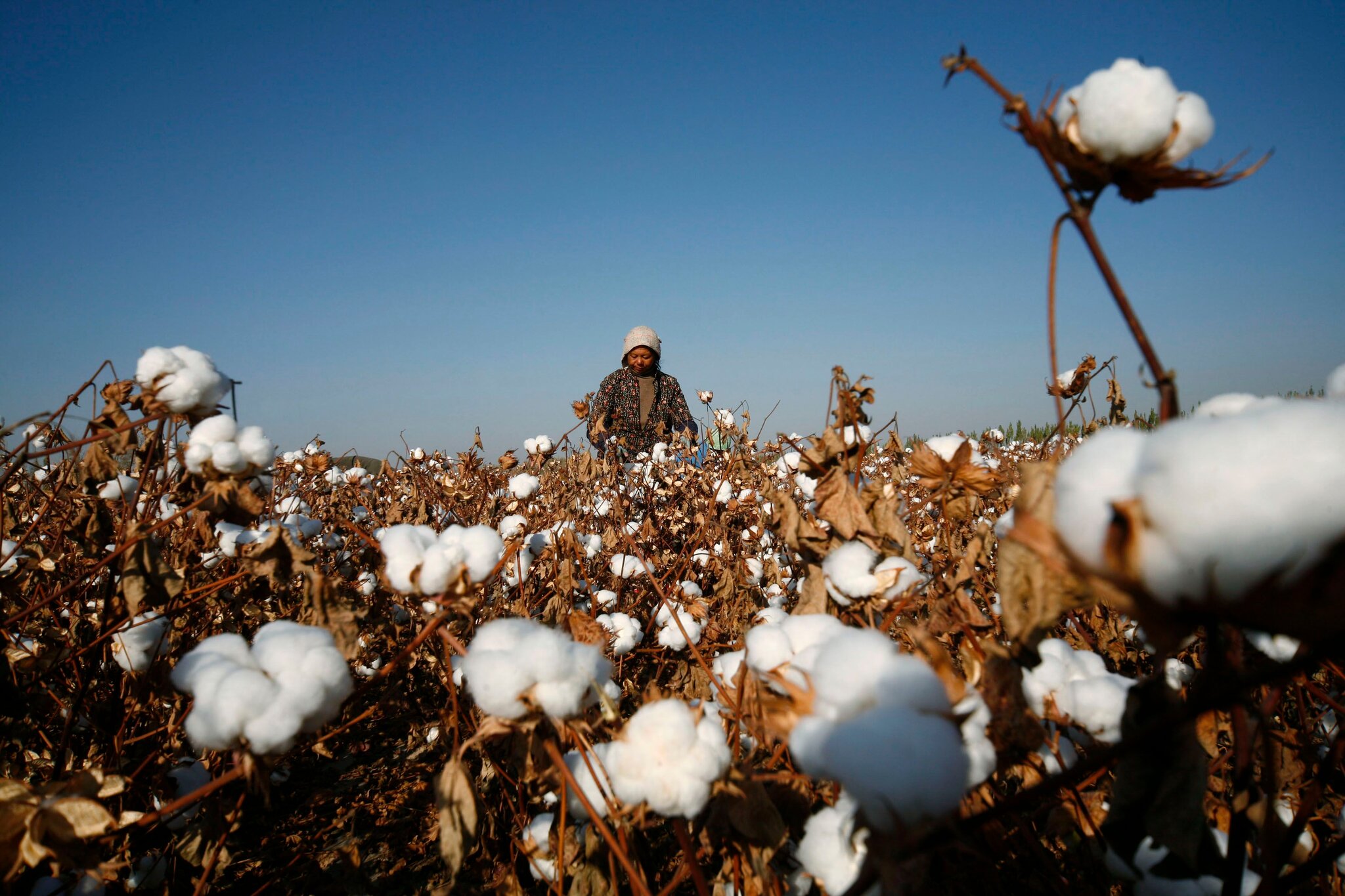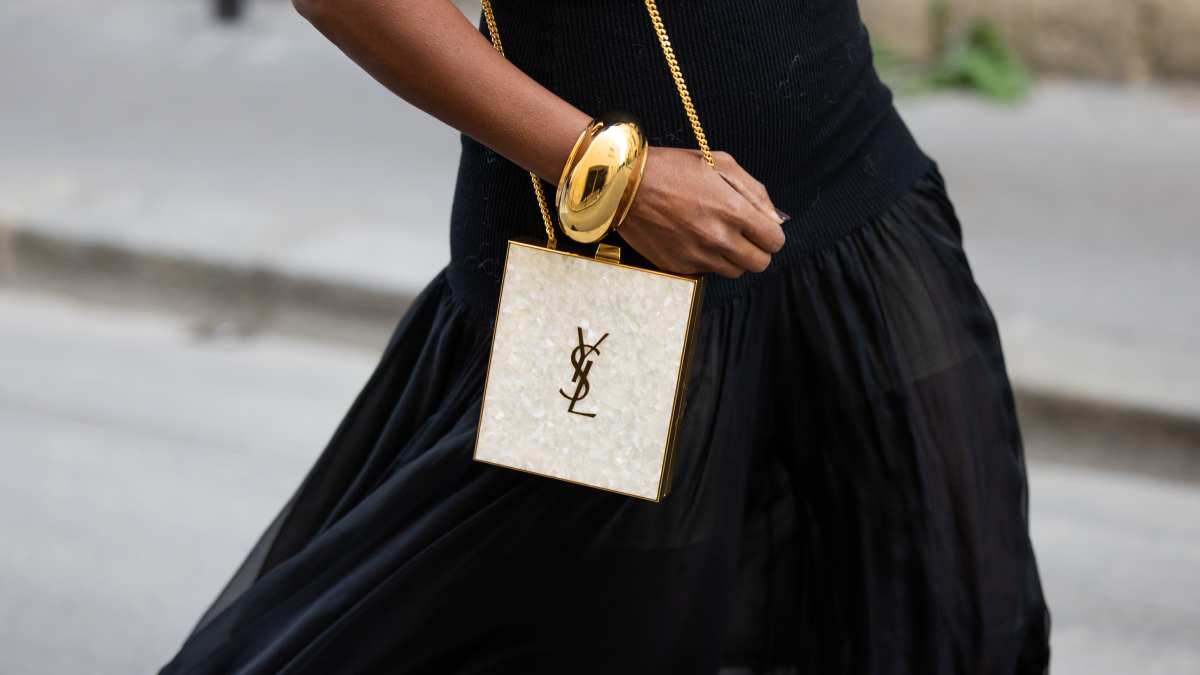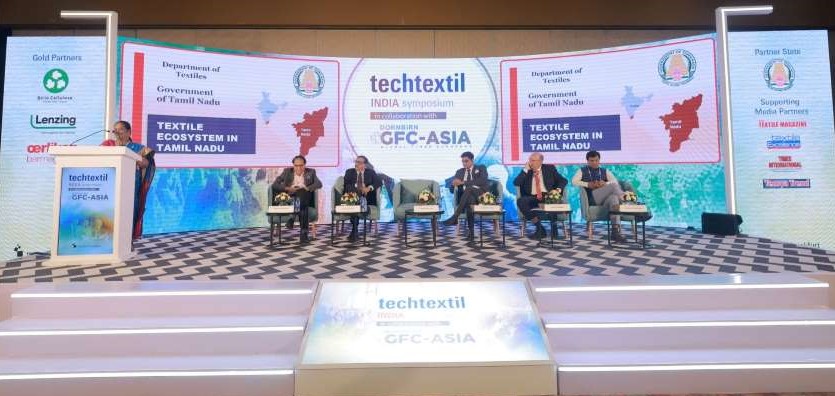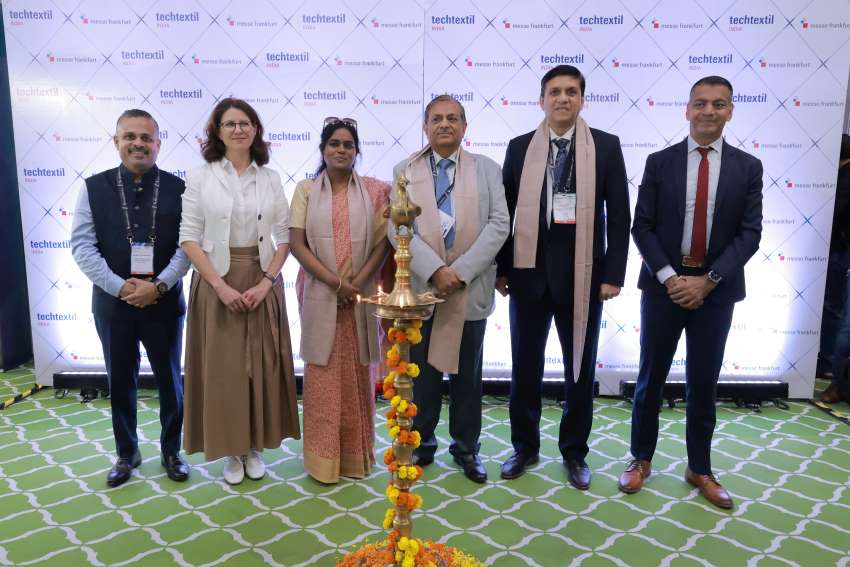FW
A Swedish supplier of furniture to IKEA stores globally, Inter Ikea registered a 26 per cent decline in its annual operating profit in FY25, due to increased costs, primarily fueled by the impact of US tariffs.
The IKEA brand owner reported, their operating profit for the fiscal year that ended August 31 declined to €1.7 billion ($1.98 billion), from €2.3 billion the previous year. Their revenue also saw fell to €26.3 billion from €26.5 billion, following the company’s efforts to lower prices.
Inter IKEA noted, commodity prices and logistics costs had increased in the latter half of the fiscal year due to market uncertainties following the announcements of U.S. tariffs. Overall sales from IKEA stores across 63 global markets declilned for the second consecutive year to €44.6 billion ($52.01 billion). This occurred as the budget furniture retailer continued its strategy to cut prices and attract more customers. While IKEA has reduced prices overall, the higher U.S. tariffs forced the company to raise prices on certain products imported into the U.S. from factories in Europe and China.
To address these pressures, the company is looking toward local production. The Lithuanian furniture manufacturer SBA, a key IKEA supplier, recently opened its first US factory in North Carolina. This plant is manufacturing top-selling IKEA products like the Billy bookcases and Kallax shelving units.
Henrik Elm, Chief Financial Officer, Inter IKEA clarifies, the factory was planned before President Donald Trump began his tariff increases. However, the timing is very timely since that is also helping us to mitigate the effects of the tariffs on those top-selling products, he notes.
Despite the decline in profit, Inter IKEA saw a positive sign in sales volume. Wholesale sales volumes increased by around 6 per cent compared to the prior year, indicating that shoppers were responding to the lower prices by purchasing more items.
Co-located with the Lace & Trims Show, the 38th Garment Technology Expo (GTE) Ahmedabad 2025 attracted 9,700 visitors during its three-day run.
This high industry turnout firmly reaffirmed the expo’s position as one of the most influential and business-driven platforms for garment and apparel technology across India’s Western region.
Jointly organized by Garment Technology Expo(GTE) and India Exposition Mart (IEML), the event reported exceptional engagement throughout all three days. Exhibitors experienced consistent buyer interactions and a high volume of inquiries from manufacturers, exporters, and sourcing professionals.
Dr. Rakesh Kumar, Chairman, IEML,stated, the robust B2B turnout highlights the growing appetite for technology upgrades among MSMEs (Micro, Small, and Medium Enterprises) and mid-sized garment manufacturers. He emphasized, the event successfully created a strong link between global machinery suppliers and India's fastest-growing apparel clusters.
Exhibitors offered strong endorsements of the show's business impact. Rohit Gupta, Managing Director, Balaji Sewing Machine, shared, the expo is a good platform to exhibit their products.The event is tailored especially for the garment industry, where their business receives a good boost..
Across its three days, GTE Ahmedabad showcased over 225 brands across 50,000 sq. ft., featuring cutting-edge garment machinery, digital printing systems, embroidery solutions, automation tools, and a comprehensive selection of laces, trims, and essential components for the apparel production industry. This edition significantly strengthened India’s garment manufacturing supply chain by offering a complete sourcing ecosystem under one roof.
The organizers announced the next two major editions of GTE. GTE Greater Noida is scheduled for March 20–23, 2026, at the India Expo Centre & Mart. This event is expected to deliver an even larger and more diverse technology showcase.
A subsequent edition in Bengaluru in September 2026 will expand the platform’s reach into South India’s dynamic textile and apparel clusters.
Both forthcoming editions will be co-located with the Lace & Trims Show, ensuring a comprehensive display of machinery, accessories, embellishments, and essential inputs critical to the garment industry’s evolution. These events are poised to offer wider exposure, deeper sourcing opportunities, and a comprehensive view of the entire apparel ecosystem, further strengthening the industry’s path toward innovation and global competitiveness.

The global fashion sourcing industry is set to converge on Milan once again as READY TO SHOW, the only trade fair in Italy dedicated to the fashion sourcing business, announces its upcoming session from February 21 to 23, 2026, at the Fiera Milano-Rho Exhibition Centre. The event, established in 2001, promises to be an indispensable platform for Italian and European fashion brands seeking worldwide production partners.
Organized as a key section of Milano Fashion & Jewels (MFJ), the show is strategically timed to coincide with the opening of the famous Milan Fashion Week, maximizing attendance and synergy within the fashion calendar. The February 2026 edition is particularly significant, as it will be held concurrently with other major industry events like MICAM (footwear) and MIPEL (leather goods), allowing visitors free admission and access across all halls—a feature expected to significantly boost the overall visitor count from the 16,000 recorded at the September session.
“A gateway to the Italian market”, says Georges Papa
Georges Papa, the founder and organizer of Ready To Show, highlighted the event's unique value proposition in an exclusive interview emphasizing the show’s role as a prelude to one of the world's most prestigious fashion events.
Papa underscored the demand-driven nature of the show, which connects Italian buyers with production partners from all over the world. The show's roughly 100 exhibitors represent a diverse global supply chain, primarily from countries like China and Bangladesh, but also significantly from India, Turkey, Pakistan, Nepal, Uzbekistan, and Colombia. Italian manufacturers also exhibit under the special Area Italia banner, catering to private label production and smaller-quantity orders, including first collections for young designers.
"When you become a supplier for some Italian brand, you become a supplier for the world fashion market because Italian brands export all over the world," stated Papa. "You meet them in Milano and together with them you go to all markets in the world, step by step, but sure for success.", emphasises Georges Papa.
Focus on quality and global opportunity
Ready To Show continues to draw major Italian brands and distributors—including names like OVS-Coin, Max Mara, Liu Jo, Pinko, and Monnalisa—as well as international player; such as VF Corp and Napapijri.
The primary reason for international manufacturers to exhibit in Italy, according to the organizers, is the opportunity to meet these key Italian fashion brands and distributors. Italy is recognized as Europe's most dynamic market, especially for fashion exports worldwide for:
● Quality Over Price: Italian brands are noted for being more concerned with quality and service than just lower prices, a factor that often helps overcome initial concerns about Minimum Order Quantity (MOQ).
● The 'Made in Italy' Effect: Becoming a production partner for an Italian brand provides an essential quality label and acts as a gateway to other European customers.
● Diverse Sourcing: The fair offers suppliers for a wide range of products, including women's wear, men's wear, children's wear, sportswear, and fashion accessories, ensuring buyers can find partners for any kind of production need.
The show is exclusively open to professionals and facilitates business through its B2B format, which includes pre-arranged appointments with selected buyers and a Hosting Programme for selected international guests. As Papa concludes, the event is dedicated to welcoming exhibitors to Milano, fully prepared for "business with fashion brands in Italy."

The fashion industry is entering a generational re-mix. Deloitte’s 2025 Gen Z & Millennial Survey reveals younger consumers who will make up the bulk of tomorrow’s buyers are no longer motivated only by logos or ladder-climbing status they are balancing money, meaning and well-being. That triad is reshaping demand across value, premium and luxury segments, accelerating resale and sustainability, privileging experiences and personalisation, and forcing incumbents to pivot across product, price and platform.
Deloitte’s survey done from October to December 2024 on 23,482 respondents across 44 countries, highlights several attitudes that matter directly for fashion companies.
Purpose & sustainability matter. Environmental anxiety and purposeful consumption are recurrent themes; younger buyers consider a brand’s values when choosing what to buy and where to work.
Financial pressure coexists with aspirational behaviour. Cost-of-living worries mean younger shoppers are selective they trade up for meaningful purchases but also hunt for value (dupes, outlets, resale).
Skills, tech and social influence shape demand. GenAI, creator economies and social commerce accelerate trend cycles meaning tastes shift faster and micro-brands can scale quickly.
These attitudes translate into commercial fault-lines across three retail strata: value, premium/affordable-luxury, and true luxury each with distinct growth dynamics and strategic levers.
Table: Luxury market growth pattern
|
Market/ region |
2024-25 size (Approx.) |
Near-Term CAGR (mid-range) |
Sources |
|
Global Apparel Market |
$1.7–1.9 trillion |
3-5% p.a. (2025-30) |
Estimates vary by analyst. Growth is being driven by premiumization and emerging markets. |
|
Global Luxury (Personal Luxury Goods) |
$380-460 billion |
Flat to +4% (2024-26) |
Shows a slowdown in growth compared to previous years due to economic uncertainty. |
|
Luxury Resale Market |
$30-40 billion (2024) |
7-15% p.a. (2025-30) |
This is the fastest-growing segment, driven by sustainability consciousness and affordability. |
|
India Apparel Market |
$67–112 billion (2024 estimates vary) |
4-10% p.a. (Analyst Ranges) |
Branded and premium segments are growing faster than the overall market average, driven by a rising middle class and urbanization. |
The Luxury Resale Market is growing 3 to 4 times faster than the overall first-hand global apparel market. This signals a fundamental shift where consumers, especially younger generations, are prioritizing sustainability, value retention, and conscious consumption over the cheap, disposable model of traditional fast fashion.
How the three tiers are being rewired
Value & fast fashion
Younger consumers under financial pressure still want fashion relevance. That produces three behaviours. Purchase of affordable dupes and fast-fashion trends as in TikTok/TokShop cycles. Business Insider and social-listening studies show a rise in dupe content and acceptance among Gen Z. Increased use of social commerce, live shopping and micro-influencers to discover deals. These channels reduce funnel friction for low-priced, high-turn SKUs. The retail implication is a tight assortment, hyper-localised merchandising and low CAC social funnels win.
Premiumisation and occasion buying
Deloitte and market notes show Gen Z in markets like India is a major driver of aspirational premiumisation willing to spend on meaningful, higher-quality items (occasion wear, sneakers, bags) while trimming everyday spend. In India Deloitte projects Gen Z to be a major consumption engine (Gen Z = significant share of consumption). The retail implication is that brands should build accessible entry points (collabs, limited drops, experiential retail), deepen loyalty, and invest in storytelling and sustainability credentials.
Luxury & resale
Luxury is under a macro pause (price increases drove past growth) but younger buyers are important as they sample luxury via resale, prefer mix-and-match styling and prize authenticity and provenance. Bain/McKinsey show luxury’s growth has become price-driven and that pre-owned luxury is growing faster than new in some categories. The resale market is forecasted to grow rapidly at a CAGR of 7-15 per cent. The retail implications is that legacy luxury houses must balance protecting scarcity and opening curated resale/in-house recommerce to capture younger buyers and locking value into brand ecosystems.
How Deloitte’s attitudes map the sectors
Purpose + sustainability = purchase filters: Deloitte shows environmental concerns shape behaviour; younger consumers will reward brands that show tangible action (materials, traceability, circular programmes). Fashion players must move beyond slogans to measurable commitments.
Financial squeeze leads to selective premiumisation and resale: Cost pressures make Gen Z and millennials pragmatic: some purchases are downgraded while others are upgraded (investment pieces). That explains simultaneous growth in premiumisation and resale.
Platform & creator economy power: Rapid trend cycles and taste formation on TikTok/Instagram/short-form video and creators turning into micro-retailers compress the time between discovery and purchase advantaging nimble brands.
Tech tools reshape trust & inventory economics. AI powers fit, discovery and authentication (critical for resale). Deloitte also flags GenAI as a work/skill shift the same tech is changing retail operations and creative cycles.
Growth shifts to Asia, Tier-II, III India. Analysts project India and APAC as growth engines, with rising branded-apparel penetration and expanding online retail penetration (Deloitte India notes Gen Z’s spending power and online growth)
What’s working and why
Vestiaire Collective/The RealReal: Pre-owned platforms have become a low-friction entry into luxury for aspirational Gen Z. Bain and market reports show secondhand sales outpacing new in segments; platforms invest in authentication and community to convert first-time luxury shoppers into long-term customers.
Coach/Ralph Lauren: Brands that leaned into younger tastes (collabs, token entry pieces, social-native storytelling) have partially insulated themselves from luxury slowdown. Media coverage highlights brands that successfully engaged Gen Z via personalization and accessible luxury.
Indian D2C/mall strategies: Deloitte India and industry analysts note D2C brands and conglomerates are using offline popups and curated mall spaces to convert social followers into paying customers particularly in Tier II, III cities where aspirations are rising.
What the P&L winners will do in 2025-30
Future fashion profits will belong to brands that combine financial discipline with agility and truly understand why people buy. The winners will integrate merchandising, sustainability, and creator partnerships as connected levers for profit and loyalty, rather than siloed functions.
1. Merchandising by intent: Brands will shift from chasing blanket volume to segmenting inventory by purchase intent:
• Trend SKUs: Fast-moving, socially viral styles for rapid turnover.
• Investment SKUs: Higher-margin, slower-churn items that drive repeat purchases. This approach allows for targeted media buys and cohort-based pricing, replacing blanket discounting to capture the full spending potential of various consumer segments, from premium-seeking Gen Z to the price-sensitive end.
2. Owning the circular economy: Retailers must own or partner closely in recommerce. In-house resale programs retain customers longer and turn circularity into a profit center, not just a compliance cost. Integrating resale platforms and trade-in schemes allows companies to extract value from previously lost inventory while appealing to younger consumers' demand for thrift and authenticity (Bain data).
3. Measuring sustainability in revenue: The focus is moving from green marketing to data-backed supply-chain measurement. Brands using technologies like SYDNA to embed lifecycle assessments into sourcing and costing can command a tangible premium for transparency—resulting in margin expansion and brand equity, as purpose increasingly drives purchase decisions (Deloitte 2025 findings).
4. Localization for growth: Companies that localize assortments for India and the broader APAC corridors will outperform global peers. The new consumption frontiers are in Tier-II and III cities. Investing in omnichannel infrastructure, from physical stores to digital discovery and premium entry-price formats in emerging markets, will provide a decisive edge.
5. Creator-led micro-drops: The next differentiator is treating creators as co-entrepreneurs. Social-native brands use limited-edition collaborations, or micro-drops, as low-cost test beds for trend validation. This strategy reduces inventory risk by seeding new categories, measuring real-time traction, and only scaling proven concepts through owned channels.
Scenario thinking to 2030
Global apparel is projected to see moderate 3-4 per cent CAGR, aligning with Grand View Research and Bain. Luxury will stabilize, while resale maintains a strong high-single to low-double-digit growth. India and APAC will outperform developed markets, led by urbanization, rising incomes, and digital retail.
On one side, a faster-scaling circular economy is the key upside. Authenticated recommerce (e.g., ThredUp) could achieve double-digit annual growth, spawning high-margin services like repair and authentication. This turns sustainability into a recurring revenue stream. On the downside, a macroeconomic slowdown with prolonged inflation or weak discretionary income could compress non-essential fashion spending. This would lead to deeper promotions, margin erosion, and potential consolidation in the mid-market. Value and resale would be resilient, but premium and luxury brands will need superior storytelling and innovation to maintain share.
The Deloitte’s 2025 survey is not a consumer trend memo it’s a behavioural map of the cohorts who will account for the majority of future consumption and workplace leadership. Their combined anxieties, aspirations and tech habits are accelerating structural shifts already visible in sales data: premiumisation co-exists with prudence; authenticity with reuse; creators with curated experiences. Brands that translate Deloitte’s attitudinal signals into concrete product, pricing and platform changes and measure the ROI will claim the growth that exists in a large but nuanced apparel market.
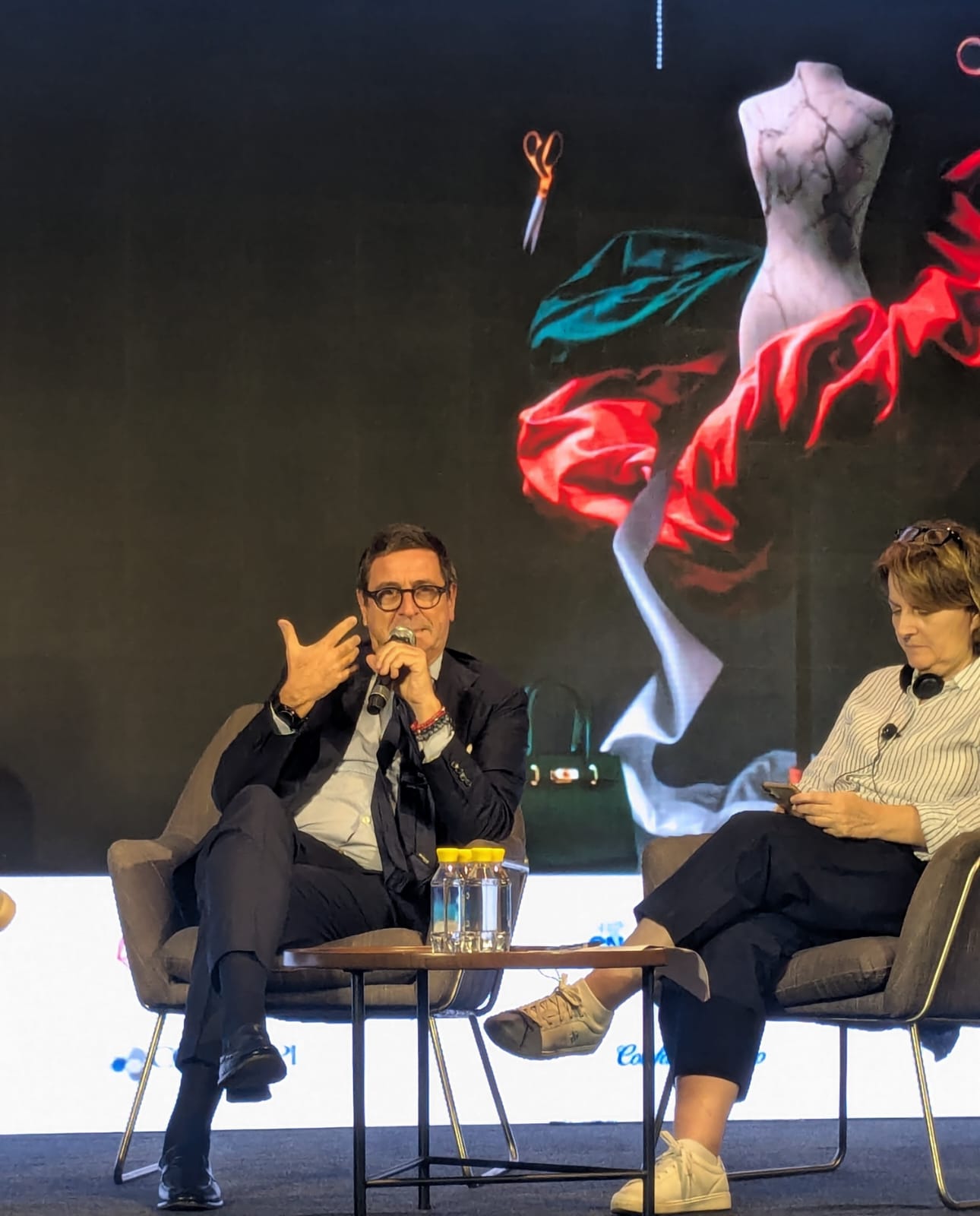
A fascinating look into the labor practices of high-end Italian craftsmanship revealed a revolutionary philosophy at the recent 'Italian Fashion Days in India': emotional well-being dictates product quality, and employers must pay a premium for it. While many global manufacturers focus on minimizing labor costs, a leader from the Neapolitan tailoring industry explained why their artisans are paid nearly double the national average—because a stitch done with anger will "suffer."
The philosophy of Capa Frisca
During the discussions, a leader from the Neapolitan tailoring industry, Antonio De Matteis, CEO of Kiton and President of Pitti Immagine offered a unique perspective on labor economics, arguing that for the highest level of artisanal work, the emotional state of the worker is the most critical input.
The philosophy centers on the Neapolitan term "capa frisca," which translates roughly to having "few thoughts" or a clear mind. The premise is that in highly detailed, handmade work—where the product is literally stitched with the hands and soul—any anxiety, tension, or anger from the artisan will compromise the final product. "If you want to be angry, you don't put the point where it should be, but you put it with anger. And if you put it on the table, it suffers," Antonio explained.
Investing in contentment
To achieve this state of contented focus, the company pursues a radical labor strategy: its artisans are very well paid, earning nearly double the average Italian wage. This high compensation is considered a necessary cost of quality, directly linked to achieving the "capa frisca."
This practice, initiated by the founder Fino Colone, is essential for maintaining the meticulous, highly artisanal nature of their product. It ensures that the people working around the table are happy and focused, allowing them to deliver the precision and "soul" that define true Neapolitan tailoring. Beyond wages, the company also incorporates measures like two coffee breaks to let the workers' eyes rest, demonstrating a holistic approach to employee welfare.
Beyond the economic count
Ultimately, this labor model reflects a core Italian characteristic that transcends simple market calculations. The true Italian ethos, according to the speaker, is a non-economic desire to "do the best in the world" and to "serve the neighbor"—a value that extends to their clients, whether Italian, European, or Indian.
This intrinsic pleasure in performing the highest quality work, even "before the economic count," is what has allowed Italian fashion, furnishing, and cuisine to make a difference globally. The Neapolitan model, therefore, represents a perfect fusion of cultural passion and sound business logic: investing in the happiness of the artisan is the highest form of quality control.
The insights shared by industry leaders, including the Neapolitan tailoring executive, were presented on Day 2 in Mumbai as part of the broader 'Italian Fashion Days in India' (Le Giornate della Moda Italiana nel Mondo). This three-city initiative (New Delhi, Mumbai, and Ahmedabad), held from October 28-30, marked a significant new step in the strategic partnership between Italy and India and was a key component of Italy's "Diplomacy and Growth Strategy."

The 'Italian Fashion Days in India' (Le Giornate della Moda Italiana nel Mondo), marking a significant new step in the strategic partnership between Italy and India, was held between Oct 28-30. This three-city (New Delhi, Mumbai, and Ahmedabad) initiative, being described as the first of its kind in India, is a key component of Italy's "Diplomacy and Growth Strategy."
A vital discussion during the summit centered not on Italian design, but on Italian business structure. The nation’s renowned fashion industry, historically built upon a network of highly specialized, small-to-medium enterprises (SMEs), is now facing a difficult choice: consolidate or risk being marginalized by the global market.
The erosion of ‘Small and Beautiful’
Claudio Marenzi, CEO of Herno and Montura and an industry leader, addressed the challenge head-on. He noted that Italy has long prided itself on the "small and beautiful" model—specialized manufacturers focusing on niche, high-quality products.
However, Marenzi warned that this approach is becoming unsustainable. "The world is becoming more and more round-the-clock, not only global, and it's more and more difficult to stay with a small organization," he stated. While specialization still creates superior goods, the global logistics, digital demands, and continuous competition make it overly complicated for small entities to manage.
The mandate for aggregation
The solution for the future of "Made in Italy" is aggregation. For Italian fashion to scale successfully and compete with global conglomerates, SMEs must merge or form strategic alliances to create operational efficiencies.
Marenzi outlined the specific areas where consolidation is critical: Information Systems, involving the pooling of resources to create modern, shared IT infrastructures; Production Efficiency, focusing on gaining efficiencies through coordinated, larger-scale production strategies; and Global Distribution, which requires establishing common distribution channels and logistics networks to serve vast, complex markets like India and Asia without crippling internal costs.
This movement toward consolidation is seen as a strategic necessity, providing the necessary operational muscle to protect the country's creative heritage while securing a profitable future.
Building a foundation for India
The need for structural change is particularly acute when looking at a complex, high-potential market like India. The current SME model struggles with the scale and infrastructure required for successful expansion. By aggregating, Italian brands gain the stability and centralized resources needed to effectively understand and serve the massive new middle class emerging in India.
The consensus from the business side of the event was clear: the ingenuity and quality of Italian design remain peerless, but for the industry to endure, its back-end manufacturing and logistics must evolve from specialized islands of excellence into a unified, resilient global competitor.
As per discussions at the Board Meeting held on November 5, 2025, one of India’s leading vertically integrated textile company, TT Ltd announced a series of new initiatives aimed at further diversification and growth.
After consolidating its operations, reducing debt, enhancing its brand, and restructuring its plant locations over the past few years, the company has now decided to enter the following new fields that will help it leverage its strengths, optimize resources, and move into higher-margin businesses.
The company is entering into a high-margin and fast-growing business of manufacturing corrugated boxes to complement its existing textile operations. This new venture will be set up at the Avinashi plant, utilizing the available land and building infrastructure to ensure efficient deployment of resources. The corrugated box unit will cater to both in-house packaging requirements and external clients in the textile and FMCG sectors.
Recognizing the strategic importance of Southeast Asia in the global textile supply chain, TT Ltd plans to open a sourcing and marketing office in Ho Chi Minh City, Vietnam. Vietnam’s central location offers access to two of the largest global markets - Europe and the US - and provides proximity to major raw material suppliers such as China. This move is aimed at strengthening the company’s export competitiveness and establishing a stronger international footprint in one of the world’s fastest-growing textile hubs.
In its core textile business, TT Limited continues to strengthen its product portfolio with the expansion of its ‘Hiflyer’ brand into premium outerwear and high-end innerwear. This strategic move is expected to further consolidate the Company’s position in the growing domestic apparel market and enhance brand visibility in both retail and export segments.
Sanjay Kumar Jain, Managing Director, TT Ltd, says these initiatives mark an important step forward in the company’s journey towards becoming a more diversified and future-ready organization. The firm leverages their existing strengths, while also tapping into high-potential areas that align with the evolving global market trends.
A leading integrated textiles company with a presence across the entire value chain — from yarn, fabrics, and garments to brand retail, TT Ltd markets its products under the well-known ‘TT’ brand, recognized by the Government of India as one of the few ‘Well-Known Marks’ in the country. TT Ltd exports to over 65 countries and operates through facilities and offices across Avinashi (Tamil Nadu), Gajroula (Uttar Pradesh), Surat (Gujarat), Kolkata/Howrah (West Bengal) and other key textile hubs.
Marks & Spencer (M&S) has announced a significant expansion of its partnership with Zalando, securing a new agreement that will see Zalando’s Business-to-Business (B2B) logistics arm, ZEOS, manage M&S’s entire online direct-to-consumer operations across continental Europe.
Set to launch in early 2026, the deal tasks ZEOS with fulfilling M&S online orders across 21 European markets. This strategic move will allow M&S to consolidate its inventory into a single system, streamlining operations. The retailer aims to significantly enhance operational efficiency, reduce costs, and improve the overall customer experience by offering faster deliveries and better returns processing.
This development strengthens a relationship established in 2022, where M&S initially used Zalando Fulfilment Solutions (ZFS) to service European customers through major marketplaces like Zalando, About You, and Amazon.
Mark Lemming, Managing Director-International, M&S, states, the agreement reflects the retailer’s commitment to reshaping its international business for sustained global growth. He emphasizes, M&S is now prioritizing ‘bigger, better partnerships’ to leverage advanced infrastructure, like ZEOS’s, to scale its European online footprint. The move is central to M&S's long-term strategy of building a scalable international model through strong strategic alliances and omnichannel growth.
This announcement follows a challenging period for the British retailer, which is still recovering from a cyber attack in early 2025. The breach severely disrupted online operations, forcing M&S to suspend website orders for six weeks and leading to a drop of over 40 per cent in online home and fashion sales.
M&S’s underlying pre-tax profits for the H1, FY25 declined by 55.4 per cent to approximately $232 million. The estimated total cost of the cyber incident is around $172 million, which is lower than the initial fear of $380 million. Following the restoration of its delivery services, Stuart Machin, CEO expressed confidence that trading is expected to be ‘fully recovered by the end of the financial year.’
Arvind Limited registered a strong 70 per cent Y-o-Y growth in net profit during Q2, FY26. The company’s profit increased to Rs 106.74 crore from Rs 62.77 crore in the same period last year.
This profit growth was underpinned by an 8.4 per cent rise in Revenue from Operations, which reached Rs 2,371.14 crore, compared to Rs 2,188.31 crore in Q2 FY25. Furthermore, the company's operational efficiency improved, with EBITDA (Operating Profit) increasing by 13 per cent to Rs 262 crore. Consequently, the EBITDA Margin also saw an improvement of 41 basis points (bps), rising to 11.0 per cent from the previous year's 10.6 per cent
The company reported a full near-term order book and strong volume growth across its key divisions. Its order volume for the garmenting divison increased by 17 per cent Y-o-Y to 10.7 million pieces. This division achieved its highest-ever quarterly revenue.
Order volumes for the denim fabric divison grew by 16 per cent to 15.2 million meters, supported by higher vertical integration. Similarly, volumes for the woven fabric division increased by 8 per cent to 35.1 million m with 100 per cent capacity utilisation.
The company’s revenue from the Advanced Materials Division (AMD) grew by nearly 15 per cent and the division's margin (excluding the tariff impact) was robust.
HanesBrands Inc successfully increased its profitability in Q3, FY25 despite facing a slight drop in sales. While the company’s net sales declined by 1 per cent Y-o-Y to $892 million, it achieved a significant rise in its bottom line due to cost control. HanesBrands’ profit surged by 14 per cent to $108 million during the quater, which allowed the operating margin to expand by 160 basis points (bps) to reach 12.1 per cent.
The company’s adjusted operating profit grew by 3 per cent to $116 million, with the Adjusted Operating Margin improving by 45 bps to 13.0 per cent. The reported Earnings Per Share (EPS) showed a massive 986 per cent surge to $0.76, though this substantial growth was primarily aided by a discrete tax benefit. The more representative Adjusted EPS still saw a strong 25 per cent rise to $0.15.
The 14 per cent rise in operating profit and the expansion of the operating margin were largely driven by lower Selling, General, and Administrative (SG&A) expenses and the successful execution of cost-saving and productivity initiatives.
The 1 per cent decline in net sales was attributed to an ‘unanticipated late quarter shift in replenishment orders’ at one of its major US retail partners.
Despite the ordering issue, management noted that underlying business fundamentals were improving, with unit point-of-sale (POS) trends sequentially improving each month during the quarter.
The company’s net sales from the US dropped by 4.5 per cent, but the US segment's operating margin still improved by 20 basis points (bps) to 22.2 per cent, benefiting from cost-saving initiatives and market share gains for the Hanes brand during the back-to-school season.
The company’s international net sales fell by 8 per cent with sales improving in Japan but declining in the Americas and Australia. The international operating margin dropped 230 bps to 10.2 per cent.
The company continued to strengthen its balance sheet, with its leverage ratio decreasing to 3.3 times net debt-to-adjusted EBITDA, compared to 4.3 times a year ago.
The substantial 986 per cent rise in GAAP EPS was heavily influenced by a $0.64 per share discrete tax benefit related to a valuation allowance release. The more indicative Adjusted EPS rose 25 per cent due to the improved operational performance and lower interest expenses.
The company noted that it remains focused on the successful completion of the previously announced merger transaction with Gildan Activewear.

